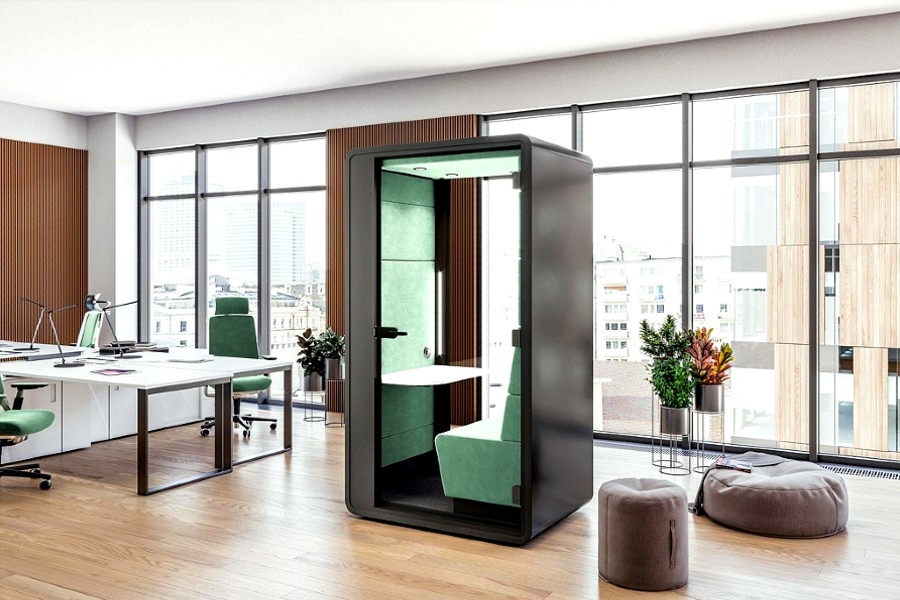
Recently, more and more companies have realized the important role that office space design plays to ensure comfort and efficiency at work.
One aspect that should be taken into account is the neurodiversity of the people employed. It is worth remembering that every employee is different, with individual needs, preferences, and reactions to stimuli that affect their well-being at work and productivity. In the following article, we will explain who neurodivergent people are and how to design a space in a company to take into account their needs and improve comfort and productivity.
What is neurodiversity?
The term neurodiversity is used to refer to the belief that the neurocognitive functions of different people are naturally variable. Each of us thinks differently and interacts differently with the world around us. However, the majority of the population are neurotypical individuals who fall within certain preconceived stimulus-response frameworks. As many as 15-20% of people in the world go beyond the accepted patterns. Cognitive disorders include autism, ADHD, Tourette syndrome, dyslexia, Asperger’s syndrome, dyscalculia and OCD. Neurodivergent individuals often have unique ways of thinking and processing information that can benefit them in the workplace.
Is it worthwhile to consider employee neurodiversity when designing a modern office?
Neurodivergent people, due to their impaired sensory integration, respond differently to stimuli and have difficulty processing multiple pieces of information at once. For this reason, it is more difficult for them to function in an open and dynamic open space office. People with Asperger’s syndrome, ADHD or dyslexia may have different environmental requirements, such as needing more space, more privacy or special lighting.
Designing an office that takes into account neurodiversity aims to create a work space that is responsive, promotes efficiency and realizes the full potential of people with sensory impairments. In addition, enhancing the sense of comfort of neurodivergent people through proper workplace design can positively affect the company’s image and attract talented employees who appreciate such an approach.

How to adapt office space for neurodivergent people? Inclusive design
When designing a modern office space, it is important not only to pay attention to design, but also to consider the needs of people who have difficulty adapting to a traditional office environment.
Prevention of sensory overload by zoning
Stimulus-sensitive people burn out quickly at work due to an excess of sounds and images. Zoning the office prevents sensory overload. In a company where there are many people with different work styles and communication preferences, it is important that design takes into account different ways of working together. It is good if there are both spaces where you can work in a group and individual workstations for performing duties in silence. In addition, zones associated with other tasks or work modes, such as phone calls, can be separated in other parts of the office using hushPhone phone booths. This will allow neurotypical and neurodivergent employees to choose the right place at any given time and perform at their best.

Acoustic booths – a way to fight distractions
People with neurodevelopmental disorders may have difficulty concentrating in noisy and crowded office environments. One solution worth introducing is hushWork’s one-person acoustic booths. They reduce noise and other factors leading to over-stimulation. Hushoffice solutions are equipped with additional features such as ventilation, lighting and power. They are available in a variety of sizes, allowing them to be customized to meet the needs of employees and set aside appropriate spaces for videoconferencing, relaxation and quiet work.
Recurring design elements
First and foremost, it is important that the office space is clear and organized. For neurodivergent people, the excess stimuli around them can be very difficult to process, and too many decorative elements can lead to unnecessary sensory stimulation. That is why it is a good idea to avoid a flurry of patterns and colors and use repetitive design elements to create a sense of familiarity with the place.
Addressing kinesthetic needs
Neurodivergent people often need movement and repositioning to maintain focus and mental health. The basis is the provision of ergonomic chairs with adjustable height and angle, desks with standing options or folding tops, and space for stretching and exercise.
Lighting and temperature control
Neuro-friendly offices should offer adjustable lighting or areas with bright and dim light to choose from. In addition, a properly set temperature helps reduce mood swings. The acoustic booths, with their adjustable lighting, efficient ventilation, and ability to change working positions, provide a welcoming space that takes into account the needs of neurodivergent workers.
Photo credit: 1-3) hushoffice.com. This content is part of the HWM Partnership.
- LISC CEO Michael T. Pugh Recognized Among 2024 Worthy 100 Leaders
- NY Lawmakers Celebrate Historic MENA Data Recognition Bill Signed By Hochul
- Sponsored Love: Leadership Skills Training Courses: Invest In Your Future Today
- Senator Hoylman-Sigal Calls On Independent Schools To Adopt NYC Public School Calendar
- Mayor Adams Celebrates 65 Million NYC Visitors In 2024, Second-Highest Ever
Become a Harlem Insider!
By submitting this form, you are consenting to receive marketing emails from: . You can revoke your consent to receive emails at any time by using the SafeUnsubscribe® link, found at the bottom of every email. Emails are serviced by Constant Contact









